
Modern trends toward rational use of territory more than ever prompt building houses not “widthways,” but “upwards.” This applies to private structures, but even apartment dwellers try to organize a multi-level layout, thus expanding the useful area. To connect the upper and lower spaces, the need arises to erect a staircase to the second floor, the choice of which we will discuss in more detail.
Varieties of stairs by design
When designing a staircase, first of all, you will have to focus not on design, but on the area of the room to select the ideal product by construction and dimensions. There are two main types:
Marching Stairs
A common type of stairs, designed taking into account the biomechanics of movement and ensuring comfortable, safe movement. They consist of flights that count from 3 to 15 steps. If the maximum number is not enough, the height is divided into two spans, between which a small platform or winder steps are installed. Such constructions are called two-flight.
Marching stairs differ in shape and can be straight, turning (G-shaped or P-shaped) or curved. When determining this parameter, you need to rely on the room area, ceiling height, and the location of the second floor.
Two types of marching products are distinguished by the type of supporting structure: on stringers and carriages. In the first case, the steps are laid on top of the beam, and in the second, special grooves are made on the inside of the supporting element.
You will also have to choose the type of steps. Details with risers look more massive and will fit perfectly into a classic interior, and those without them are suitable for a modern house due to the light construction.
Overall, marching stairs are presented in a wide range and even for small-sized rooms you can choose a suitable specimen or combine it with other items.


Spiral Stairs
The principle of such constructions is very simple: steps are attached to the installed rod, which spiral upwards. They do not take up extra space and are quite compact.
The main reason why spiral stairs are inferior to marching ones is the difficulty in movement due to the lack of solid support. It is not recommended to install such a specimen in a house where children or elderly people live. The following parameters are considered optimal: the central width of the steps should be at least 7.87 inches (20 cm), and the widest part should not exceed 15.75 inches (40 cm).
In other cases, spiral stairs can be considered an excellent option for both modern and classic styles. Thanks to their spiral shape, they become a key element of the interior, and the design can be diversified by products of different shapes – from square to octagonal.


Bolted Stairs
Setting up this type of staircase in the middle of the room won’t work – the supporting wall serves as the base for it, to which the steps are attached using bolts. Combined into one system, they form a single load-bearing element, giving the structure a light, virtually weightless look, which is why it is often used in modern interiors.
Despite the visual fragility, the products can withstand from 1102 to 2425 lbs (500 to 1100 kg), depending on the material and manufacturer. In addition, bolts allow the height of the steps to be adjusted after installation.
Bolted stairs with railings are popular, which take part of the load onto themselves. You can experiment with the base, shape, and lighting to create a unique option for your home.


Choosing a Material for the Staircase
Stairs are made from different materials, which endow them with certain aesthetic and practical properties.
Wooden Stairs
When imagining a staircase in a house, an image of a sturdy wooden structure with ornate railings and beautiful deep texture immediately comes to mind. It could be luxurious wenge, oak, or minimalist wood of simple species. Ash, walnut, beech are considered optimal options, while pine is not strong enough to withstand the required load. A lacquer coating will protect from the negative impact of the environment, but it will need to be updated regularly.
This material is suitable for any constructions, but it looks most organic as flight products. For country or American style, such a solution is irreplaceable.


Metal Stairs
Metal constructions will serve you for half a century, maintaining the pristine, neat appearance. For this, choose samples from stainless steel, which is not subject to corrosion, as chrome-plated or painted options have a limited service life – no more than 6-7 years.
The plasticity of the base allows giving the stairs and its details any form. Metal is often combined with other materials, for example, wood, glass, concrete. It makes elegant wrought iron handrails.


Concrete Stairs
Unlike more natural materials, concrete does not have lightness or sophistication, in its pure form it is hardly fit into a classic interior, but instead, it gives a sense of solidity and integrity.
Such constructions are quite reliable, can withstand high loads, and do not spoil over time. Unfortunately, they are difficult to install by yourself, but the cheapness of raw materials covers this drawback.
An important advantage of concrete stairs is the possibility of their decoration: with stone, wood, or even ceramic tiles. The unique rough texture will be unnoticeable, but you will get an aesthetic structure at an affordable cost.


Stone Staircases
Marble has an astonishing deep texture, but as a staircase coating, it quickly wears out, literally in a few years. Granite or quartzite have opposing properties. They also perform their role excellently and are significantly cheaper artificial analogues.
Stone staircases are often combined with metal railings, and adjusting the decor allows them to fit into many styles.


Glass Staircases
If design is the priority, and a decade of flawless “service” is not required, there are no competitors for glass structures. Steps are made from this material, which are attached to bolts or used on spiral staircases. It harmoniously pairs with metal, enhancing the effect of gloss and adding reliability to such a fragile product.
Indeed, glass stairs can be damaged by a strong blow, but even without it, noticeable scratches appear on the surface over time. For greater durability, it is better to choose tempered or laminated varieties. Acrylic glass is considered the most reliable, but it has the property of darkening over time.


Styles and Design
Due to their shape, staircases often stand out among the interior ensemble, while remaining an organic part of it. When designing, it is necessary to focus on the main stylistics of the rooms.
Staircases in a modern style
Modern aesthetics favors simplicity and restraint, the use of practical materials, their combination to create a more complex look. Preference is given to clean geometric shapes, lines, flat surfaces.
The style works with the peculiarities of space, so the type of staircase design can be anything, as long as it looks advantageous in the interior.

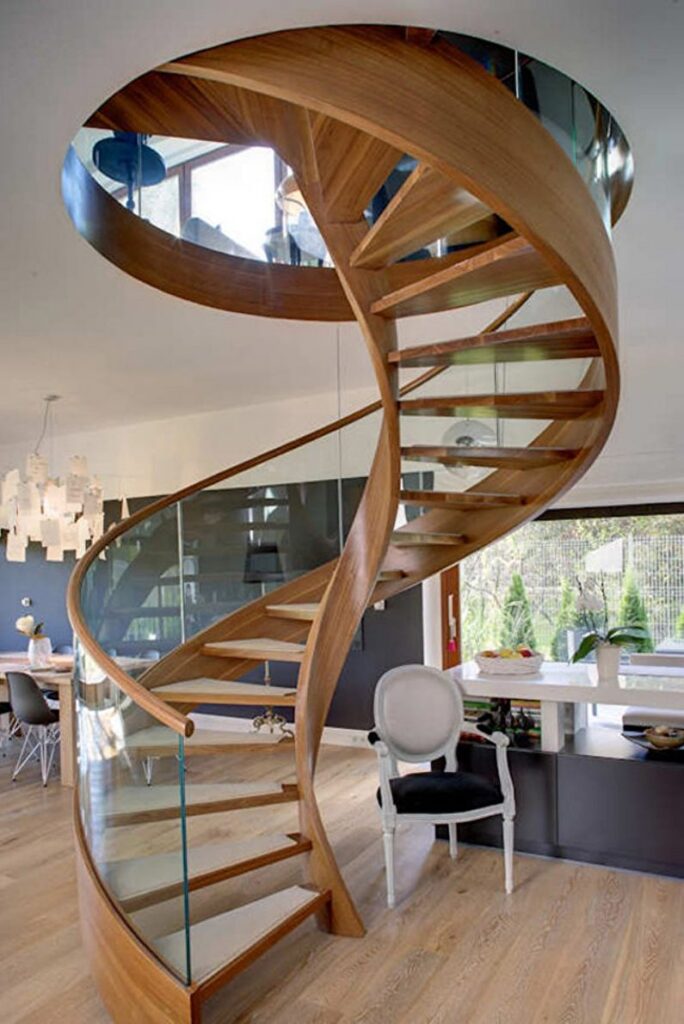
Staircases in a classic style
As mentioned above, the classic style is characterized by the use of three materials: wood, metal, and decorative stone, among which the former clearly leads. Initially, you need to choose rooms with a large area (square footage), as even the staircase here has a massive appearance.
These are often march products on stringers or risers with closed risers, divided into several flights and enclosed by strong railings, often with characteristic carvings.


Loft-style Staircases
Concrete stairs to the second floor harmoniously interact with the loft style, emphasizing its industrial character. However, other foundations will look appropriate as well.
The staircase should have a maximally simple structure, ensuring comfortable movement. Since loft interiors are usually set up in large areas, you don’t need to worry about the dimensions of the construction.


Minimalist-style Staircases
Ideally, minimalist-style staircases should attract as little attention as possible. They should blend into the overall volume of the room, forming a single functional whole with it.
Means of expression are reduced to a minimum: the texture of the material, the smoothness of lines, a natural color palette. An excellent solution is steps on stringers.

Art Deco-style Staircases
Elegant and multifaceted art deco aims to highlight its “status” in all details – from the foundation of the staircase to the railings. The latter can replicate complex, intertwined patterns, inspired by floristic images.
Straight stairs will look monumental and noble, spiral ones, thanks to their helical form, are inherently in line with the art deco style, while stringer mountings may seem too simple.


Where to Place: Main Rules
Installing a staircase to the second floor is a very individual process that depends on the dimensions, layout, and ceiling height of your space.
The most popular place for a staircase remains the entrance hall, especially in spacious mansions. In this way, upon entering the house, you immediately have access to all rooms, without wandering through the corridors.
The second most popular place for placing a climb is the living room. This is convenient for buildings of average area if the second floor leads to a private room, such as a bedroom. In a hall combined with the kitchen, the staircase can be used for zoning.


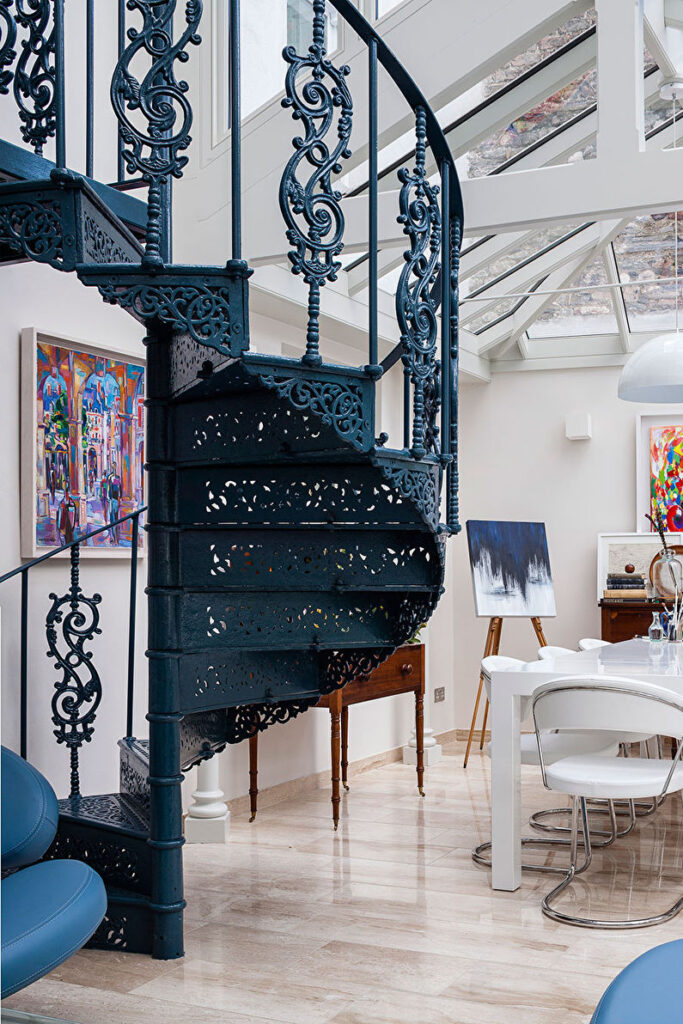
How to Design the Space Under the Stairs?
To somehow compensate for the impressive size of the staircase, you can combine it with another functional object, using the vacant space. This applies to straight structures located next to the wall. The construction of such items is more complicated, requires detailed measurements and careful planning, but the final result will make the most of every square foot of the room.
The under-stair area can serve as a frame for cupboards. This solution is relevant in the hall (for storing clothes and shoes) or in the living room (for a home library and household items).
The staircase can be organized as a partition in the living room, with protruding parts used for movement between floors.
Connoisseurs of quality drinks can arrange a large wine collection, fencing it with glass doors and installing lighting.
In the formed niche, you can place a small sofa, arrange a cozy place for relaxation and privacy, and install shelves on the side walls.
The space under the stairs is suitable for creating a separate room – a pantry, a home office, or a mini-workshop. Any child will be delighted with such a secluded playroom.
Using these ideas will let you look at the stairs in the house in a different way, transforming them from a bulky object into a functional solution.


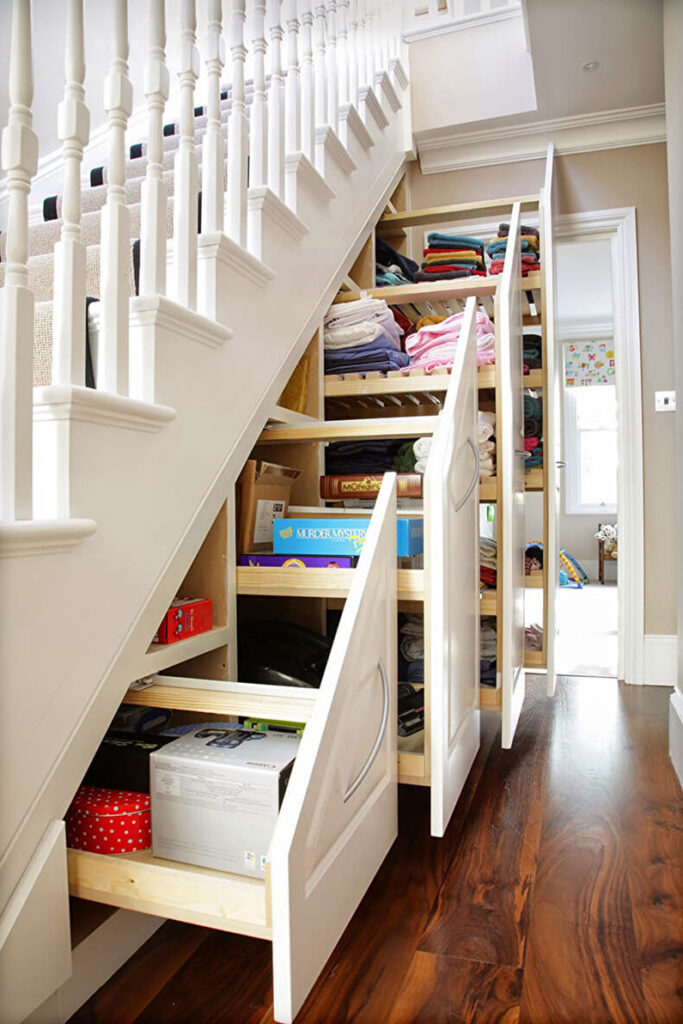
Design of the Staircase to the Second Floor — Photos
It’s hard not to notice a staircase even in the most spacious interior, that’s why so much attention is paid to its design. Even more variety of shapes, decor options, and layouts can be found in our photo selection. Enjoy your viewing!


















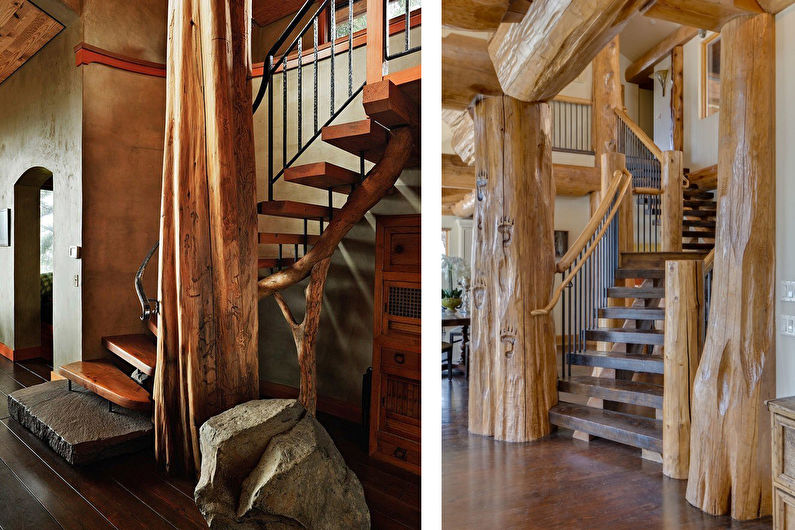



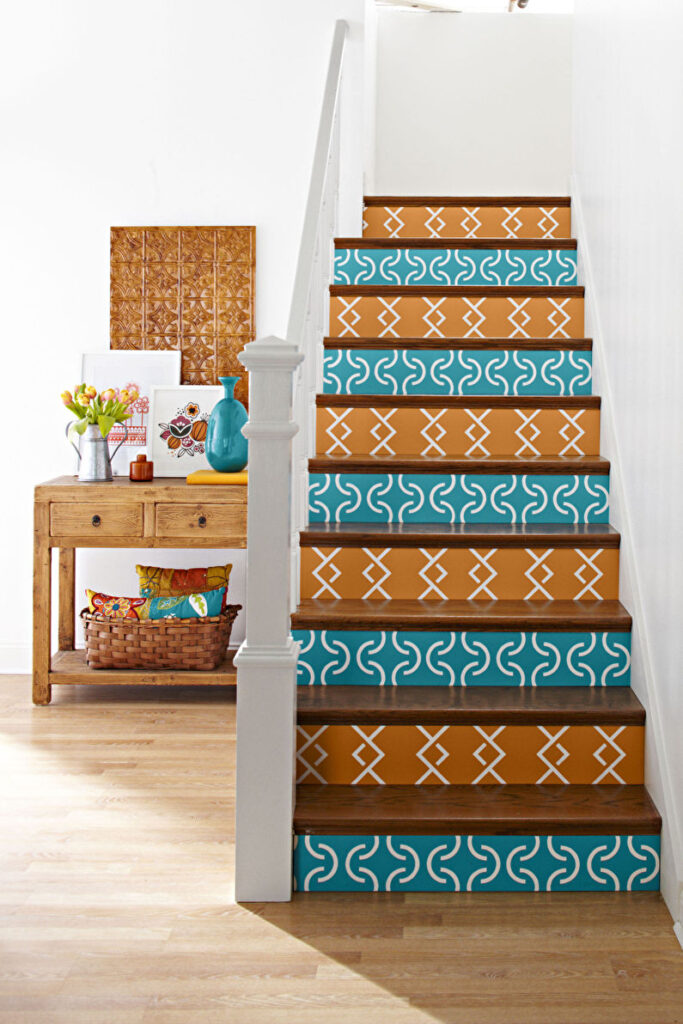
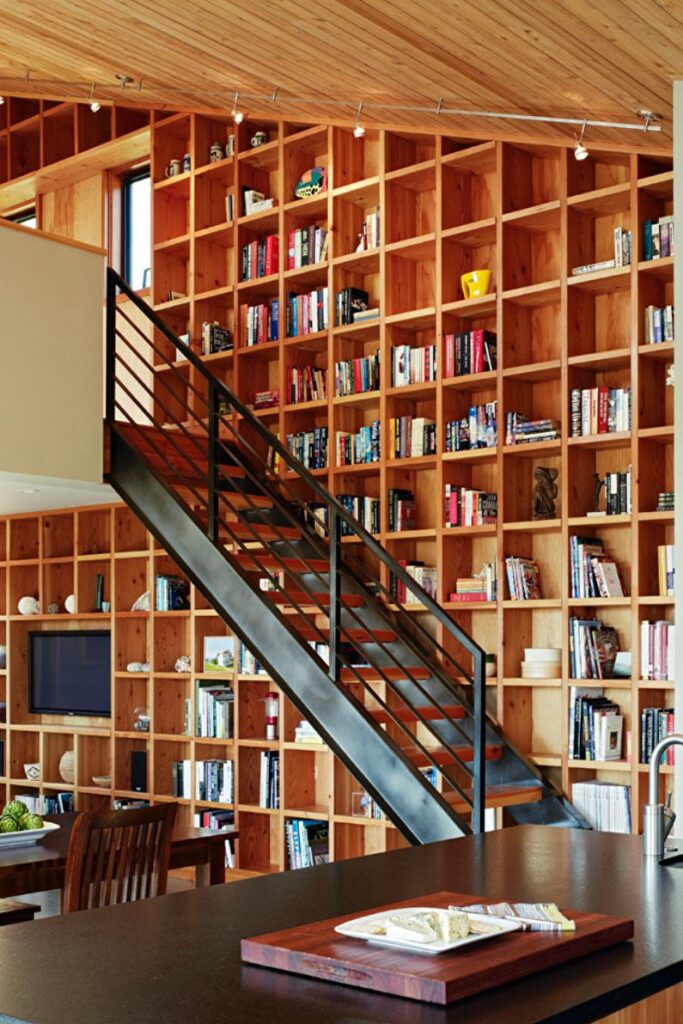
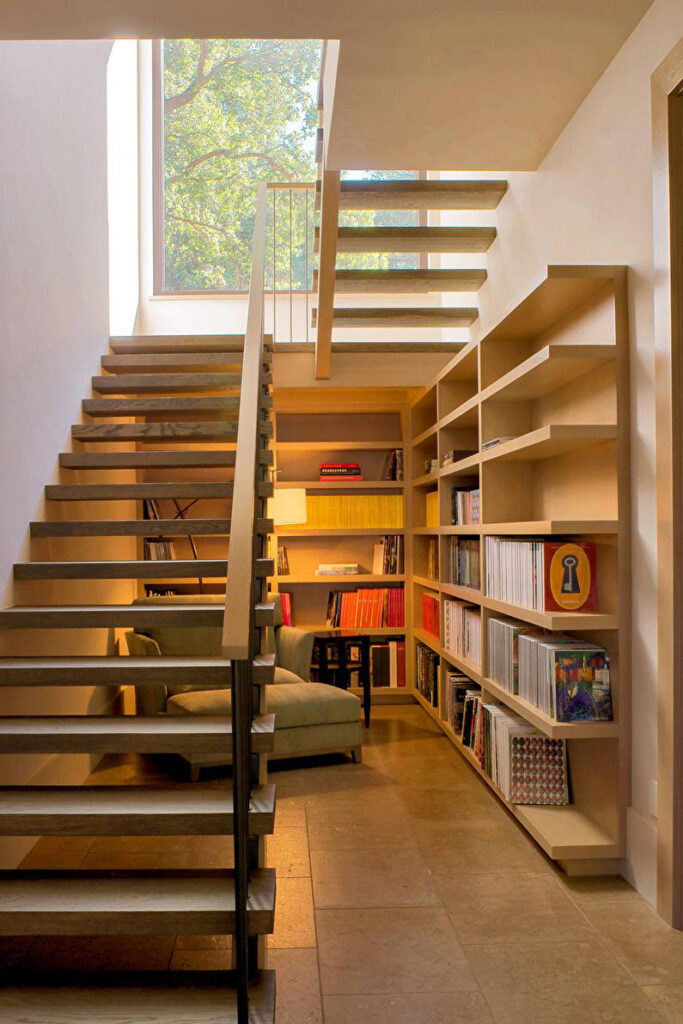


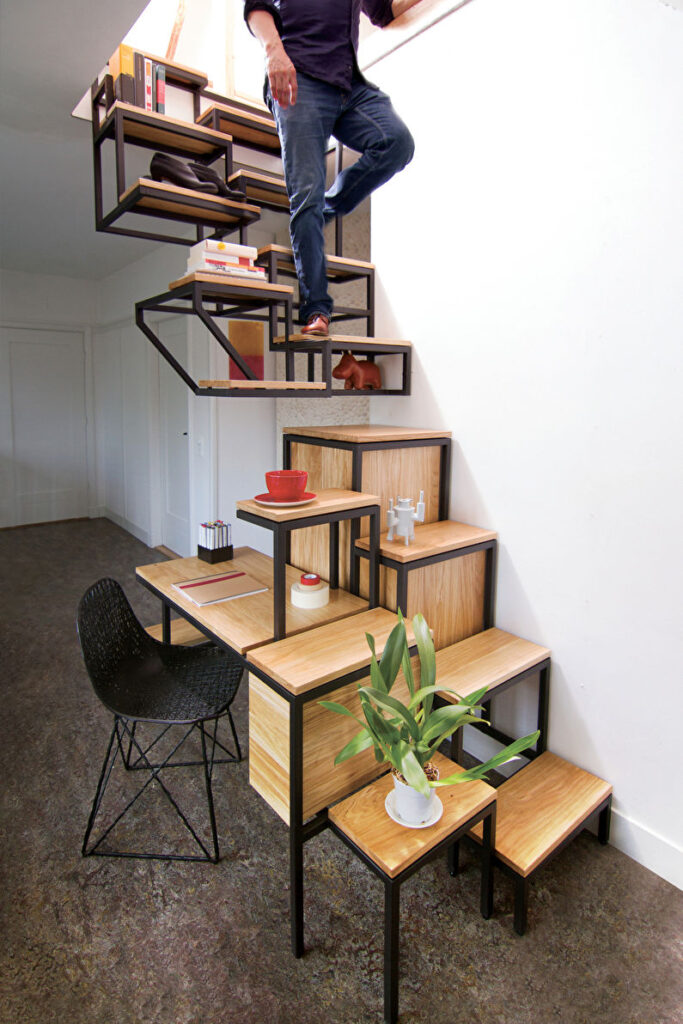

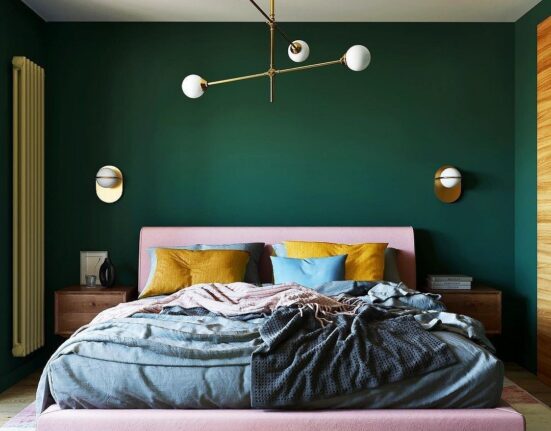

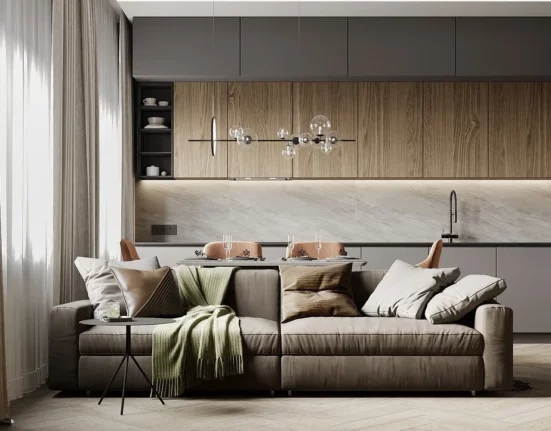
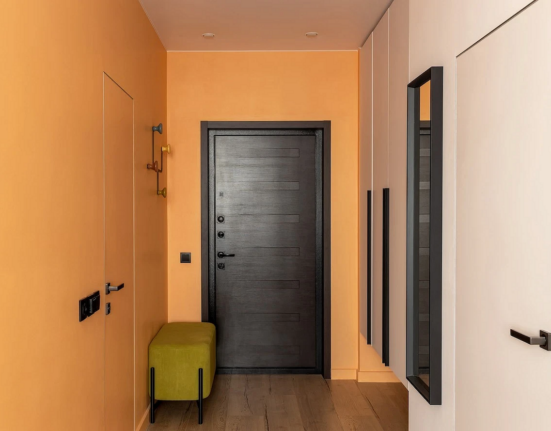

Leave feedback about this